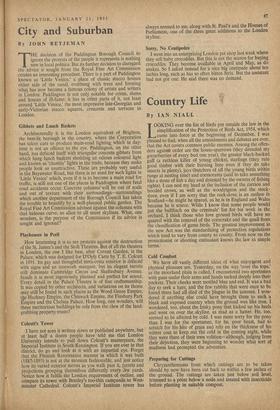By JOHN BETJEMAN T HE decision of the Paddington Borough Council
to ignore the protests of the people it represents is nothing new in local politics. But its further decision to disregard the advice it sought from the Royal Fine Art Commission creates an interesting precedent. There is a part of Paddington known as 'Little Venice,' a place of classic stucco houses either side of the canal, overhung with trees and forming what has now become a famous colony of artists and writers in London. Paddington is not only notable for crime, slums and houses of ill-fame; it has in other parts of it, not least around 'Little Venice,' the most impressive late-Georgian and early-Victorian stucco squares, crescents and terraces in London.


































 Previous page
Previous page